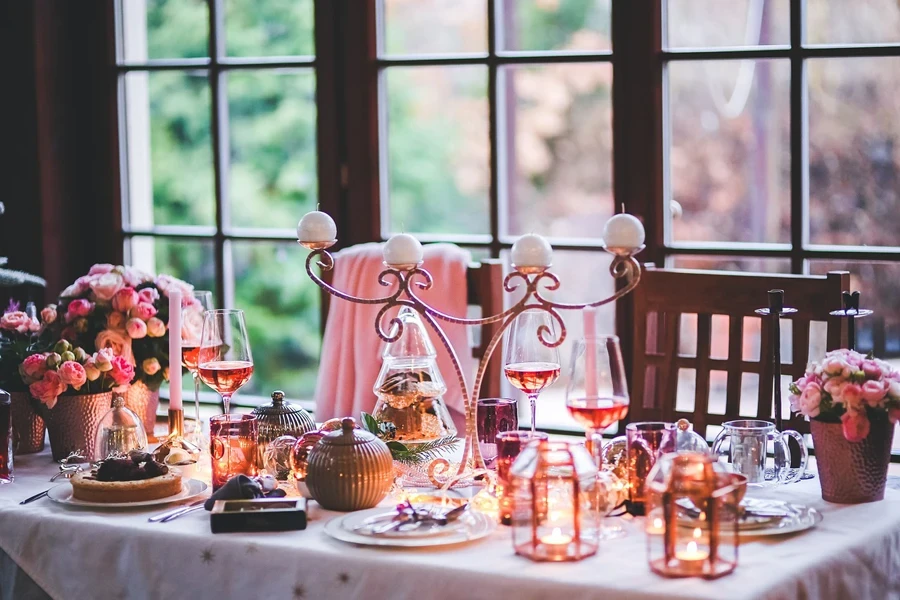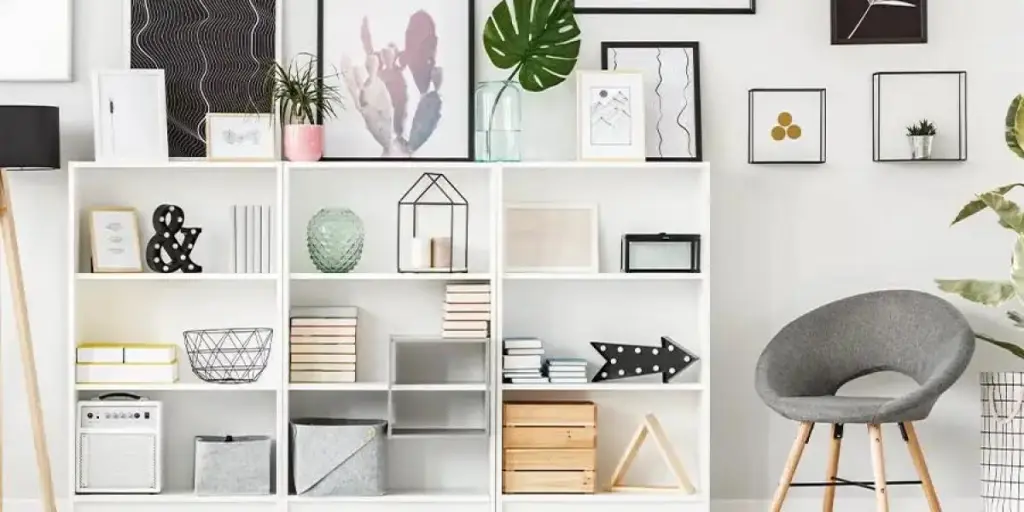Table of Contents
● Introduction
● Market Overview
● Categories available in party tableware
● Things to consider when selecting products
● Conclusion
Introduction

Throwing a memorable party involves more than just good food and company; the right tableware and decorations can elevate any event, setting an ideal ambiance and ensuring an enjoyable experience for all guests. The growing market for party supplies reflects the importance of these elements, with a wide range of options available to suit various themes and styles. Understanding the different types of tableware and their features is crucial for making informed decisions. Additionally, considering factors like material, practicality, and environmental impact can greatly enhance the overall event experience. This guide provides essential insights to help businesses choose the ideal party tableware and decorations for their needs.
Market overview

Market scale and growth
The global party supplies market is projected to reach $23.5 billion by 2030, reflecting the increasing importance of these products in creating memorable events. This market is expected to grow at a compound annual growth rate (CAGR) of 8.7% from 2023 to 2030, highlighting the rising demand for party supplies across various segments. Market segmentation includes tableware & disposables, home decor, balloons, banners, take-away gifts, pinatas, and games, catering to diverse needs and preferences in the event planning industry.
Key drivers
Several key drivers are fueling this market growth. The surge in e-commerce platforms has made it easier for consumers to access a wide range of party supplies, contributing significantly to market expansion. Additionally, the professionalization of event management and wedding planning has led to a higher demand for specialized and custom items. The growing trend towards eco-friendly products, such as biodegradable balloons and compostable tableware, also plays a crucial role.
Categories available in party tableware

Dinnerware
Dinnerware includes plates, bowls, and dishes, essential for serving food at any event. Options range from classic fine china, which is often made from a combination of kaolin, feldspar, and quartz, to versatile acrylic and plastic. Fine china typically has a high level of whiteness and translucency, and it is often reinforced with bone ash, making it both durable and elegant. Acrylic dinnerware, known for its shatter-resistant properties, is ideal for outdoor events and casual gatherings, while high-density polyethylene (HDPE) plastic offers a lightweight yet sturdy option that can withstand heavy use without breaking.
Flatware
Flatware encompasses forks, knives, and spoons, available in disposable, reusable, and biodegradable materials. Good quality stainless steel flatware, such as 18/10 stainless steel, contains 18% chromium and 10% nickel, providing excellent corrosion resistance and a polished finish. Biodegradable flatware often uses polylactic acid (PLA) or cornstarch-based materials, which decompose naturally over time. Ergonomically designed handles with weight distribution can enhance the dining experience, while serrated edges on knives ensure effective cutting without excessive force.
Glassware
Glassware covers wine glasses, water goblets, and tumblers, crucial for both aesthetic appeal and practicality. Lead-free crystal glassware, made from silica, soda, potash, and zinc oxide, offers superior clarity and brilliance, making it suitable for formal occasions. Tempered glass, which undergoes a rapid cooling process after heating, is used in durable tumblers and is up to four times stronger than regular glass. For outdoor events, copolyester plastic, such as Tritan, provides a shatterproof and BPA-free alternative that mimics the clarity of glass without the risk of breakage.
Serveware
Serveware includes serving platters, trays, and bowls, essential for presenting food attractively. Materials such as porcelain and stoneware, fired at high temperatures, provide durability and resistance to chipping. Melamine serveware, made from an organic-based thermosetting plastic, is lightweight, virtually unbreakable, and often used in high-traffic events. The design of serveware, including rimmed edges and deep wells, ensures that food remains contained and visually appealing during service.
Cutlery
Cutlery encompasses all knives and utensils used for cutting and preparing food. High-carbon stainless steel knives offer a balance of sharpness and corrosion resistance, with a typical composition of 0.5-0.8% carbon content. Ceramic knives, made from zirconium dioxide, provide exceptional hardness and maintain their edge longer than steel but require careful handling due to their brittleness. Ergonomic handle designs, often featuring polymer or rubberized grips, enhance comfort and reduce fatigue during prolonged use.
Things to consider when selecting products

Material considerations
The choice of material for tableware significantly impacts its durability, style, and suitability for different event types. Fine china, typically composed of kaolin, feldspar, and quartz, is renowned for its elegance and high durability, making it ideal for formal gatherings. Porcelain, fired at high temperatures, offers a non-porous surface that resists stains and is suitable for both casual and formal settings. Acrylic tableware, made from polymethyl methacrylate (PMMA), provides a shatter-resistant option suitable for outdoor events, while melamine, a durable thermosetting plastic, is ideal for high-traffic uses due to its strength and resistance to breakage. Wood and bamboo tableware, often treated with food-safe coatings, offer an eco-friendly alternative, with bamboo being particularly noted for its rapid growth and sustainability.
Event theme and style
Matching tableware to the event’s theme involves careful consideration of color schemes, formality, and versatility of design. Classic white porcelain or fine china provides a neutral backdrop that complements a variety of themes, while vibrant, patterned tableware can enhance specific motifs such as tropical or festive events. For formal occasions, crystal glassware, made from good quality silica and lead oxide, offers superior clarity and elegance. Casual gatherings can benefit from the use of colorful, sturdy materials like polypropylene (PP) for plates and cups, which are both lightweight and durable. The design elements, including the shape and finish of the tableware, should harmonize with the overall décor to create a cohesive look.
Practicality and functionality
Practicality and functionality are crucial when selecting tableware, taking into account factors such as ease of cleaning, storage, and reusability. Disposable options, including biodegradable plates made from polylactic acid (PLA) or bagasse (sugarcane fiber), provide convenience and reduce environmental impact for large events. Reusable tableware, such as stainless steel flatware with a chromium-nickel alloy (e.g., 18/10 stainless steel), offers excellent corrosion resistance and longevity, making it suitable for smaller, more intimate gatherings. Ensuring that the tableware is dishwasher safe and stackable can significantly reduce post-event cleanup and storage challenges.
Environmental impact
The increasing demand for eco-friendly and biodegradable tableware reflects a shift towards sustainable practices. Biodegradable plates made from materials like bagasse or palm leaves decompose naturally, reducing landfill waste. Compostable cutlery, often made from cornstarch or bamboo, provides an environmentally responsible alternative to traditional plastics. Recycled paper decorations and FSC-certified (Forest Stewardship Council) products ensure that materials are sourced from responsibly managed forests. Opting for these products not only minimizes environmental footprint but also aligns with the growing consumer preference for sustainable options.
Quantity and size
Estimating the right amount of tableware based on the event size is essential to ensure a seamless dining experience. For a formal dinner, consider providing multiple plates per guest—such as charger plates, dinner plates, and dessert plates—along with the necessary utensils and drinkware. For large-scale events, bulk purchasing of items like 10-inch dinner plates and 6-inch dessert plates ensures sufficient quantities to accommodate all guests. It’s also important to account for the types of food and beverages served, requiring specific glassware like wine glasses, highball glasses, and water goblets. Adequate planning prevents shortages and ensures a well-coordinated table setup, enhancing the overall guest experience.
Conclusion

Selecting the right party tableware and decorations is essential for crafting a memorable event that resonates with guests. By carefully evaluating material choices, aligning with the event’s theme, ensuring practicality and functionality, and prioritizing environmental sustainability, any gathering can be elevated. These considerations not only enhance the aesthetic appeal but also contribute to a seamless and enjoyable experience, making the event both impactful and unforgettable.




